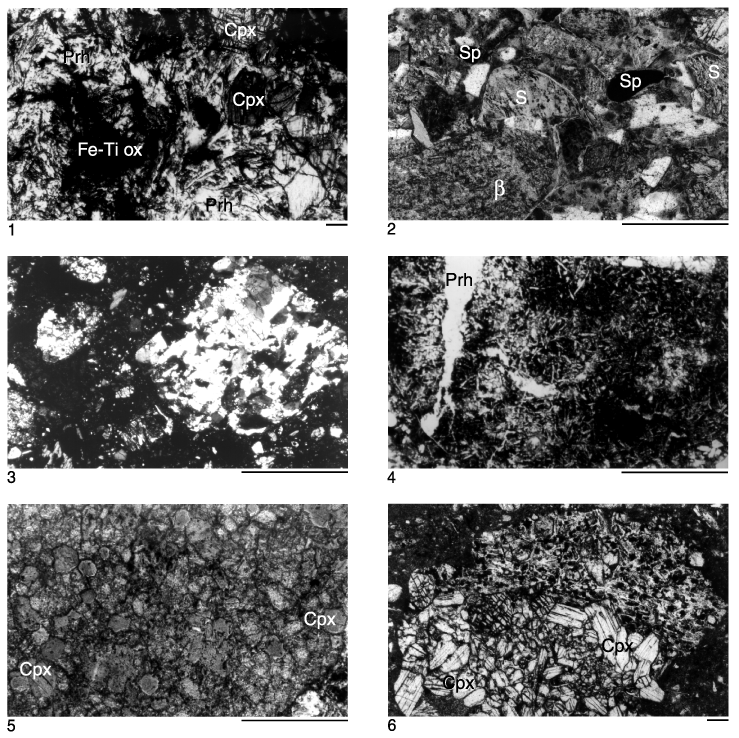Plate P3.
Optical photomicrographs. 1. Fine-grained Fe-Ti oxide gabbro. The plagioclase is pervasively altered to prehnite (Sample 180-1116A-6R-1, 37-39 cm; plane-polarized light; scale bar = 0.1 mm).
2. Polygenic arenite: rounded clast of basalt, serpentinite clasts with net (center) and ribbon (right) textures, red spinel, and volcaniclastic fragments from calc-alkaline explosive activity (Sample 180-1108B-36R-1, 82-86 cm; plane-polarized light; scale bar = 0.5 mm).
3. Arenite including clasts of gneissic rock (left), epidosite, and lavas (Sample 180-1116A-6R-1, 37-39 cm; crossed polars; scale bar = 0.5 mm).
4. Dolerite altered to prehnite by metasomatism. Prehnite also fills the veins and replaces plagioclase. The clinopyroxene is largely preserved (Sample 180-1116A-6R-1, 37-39 cm; plane-polarized light; scale bar = 0.5 mm).
5. Fine-grained olivine-pyroxenite. Olivine (and plagioclase?) are altered to serpentine and chlorite (Sample 180-1116A-6R-1, 37-39 cm; plane-polarized light; scale bar = 0.5 mm).
6. Clast of calc-alkaline basaltic andesite. The phenocrysts are clinopyroxene and olivine. The groundmass shows plagioclase microliths and a clinopyroxene nodule (Sample 180-1115C-37R-CC, 1-3 cm; plane-polarized light; scale bar = 0.1 mm).
 = basalt, Cpx = clinopyroxene, Phr = prehnite, S = serpentinite, Sp =
spinel.
= basalt, Cpx = clinopyroxene, Phr = prehnite, S = serpentinite, Sp =
spinel.

![]()